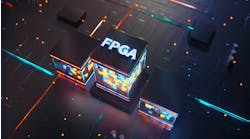Almost 60 years ago, when the programmable logic controller (PLC) was in its first year of existence, Neil Armstrong took that first small step on the surface of the moon, and the sky was no longer the limit for engineering feats.
Suddenly, we could accomplish anything by harnessing the power of equipment. If you could dream it, you could build it and control it.
Some manufacturing equipment is as big and complex as those first space rockets, but numerous platforms and architectures exist to tell the machinery what to do and when, sometimes in nanoseconds.
Many options are available for machine control. Choosing one depends on a variety of things. In some cases, the designer doesn’t even need to decide. Many pieces of equipment use a combination of controls or a configuration that oversees them. But, ever since the PLC was first conceived in the 1960s, it has become the primary alternative to PC-based control. However, both still hold their own when it comes to specific applications.
There are a few things to consider when deciding between the two options, explains Kevin Davidson, operations manager, Methods Machine Tools, Detroit Technical Center. "PCs require more frequent upgrades, and the nature of those upgrades varies," he says. "Additionally, PCs have shorter life expectancy with the phasing out of components and software. The upside for the PC is they tend to be less expensive. They’re also smaller and faster. You can add third-party software to run on them, which gives you a more integrated appearance."
However, customer experience is paramount. "At Methods, we tend to deploy more PLC because it’s what our customers currently ask for in greater volume," continues Davidson. "It suits their comfort level, and we have plenty of experience building and servicing PLC-type structures. Now, that could change in coming years as younger and upcoming talent in our industry seems to be more comfortable with programming PC-based controls."
The code that was written for the National Aeronautics and Space Administration (NASA) Apollo space program preceded the introduction of the Modicon 084, the first PLC model, by Dick Morley and Bedford Associates in 1968. We sent people to the moon on processors from the 1960s and 1970s, notes Strauch. In systems that are PLC/PC-based control, the PLC actions are dictated by the PC. Programmable automation controllers (PACs), which followed PC and PLC control, can run both applications, explains Strauch. "Or, if you have an edge computer with PLC software and C software, then you put new PLC with legacy C code on the same machine, and call it a day," she says.






